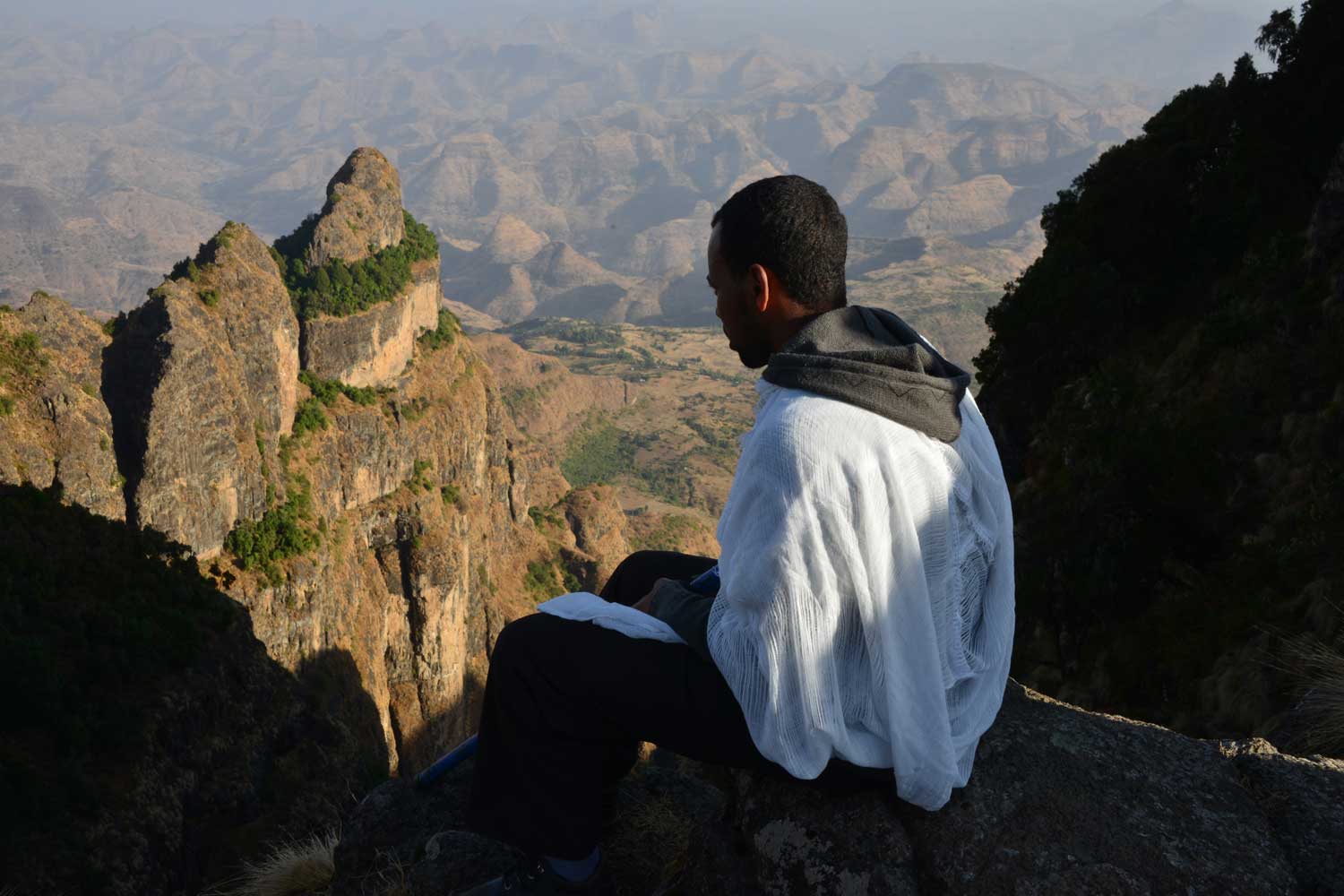UNCOVERING ETHIOPIA WITH SIMIEN LODGE’S NICK CRANE
After a difficult year, Ethiopia is emerging as one of the most talked about African destinations of 2017. During this year’s We Are Africa we sat down with Nick Crane, the founder of Simien Lodge in the Simien Mountains, to talk about starting a business in an area with limited tourism infrastructure; what Ethiopia has to offer to the modern traveller; and the right way to manage tourism growth to ensure a sustainable future.
What was it that drew you to Ethiopia? Why did you choose to establish a business there?
It’s a long story. When I was just 23, I drove across the Sahara with a friend in an old Land Rover. When we got to Lagos we headed east through the jungles of what was then Zaire. We ended up in Ethiopia and we had no money left. It was the same week that Haile Selassie was overthrown. There was a big famine in the highlands that had just been exposed by the BBC and so I thought it would be an interesting place to spend some time. I had the notion that I wanted to change Africa but as the saying goes, it was slowly changing me. Unlike my friend I wasn’t ready yet to return home and I went along to the Oxfam-Unicef office and asked if they had a job for me in famine relief. I ended up in Tigray Province, which is in the north of the country, dealing with the logistics of getting food out to the children who were in desperate need.
About the same time I trekked in the Simien Mountains, which were then unknown to foreign tourists. Many years later I returned to Ethiopia and visited the Simiens for a second time. I realised this would be a great place to build a lodge that could also serve as a platform for doing some more humanitarian work. After all, it was the second World Heritage Site to be created on the planet. It is also one of the poorest areas of the country. So I thought , ‘well, yes this is a perfect place’ and on a whim I decided to build a lodge. It was as simple as that and as they say, the rest is history!
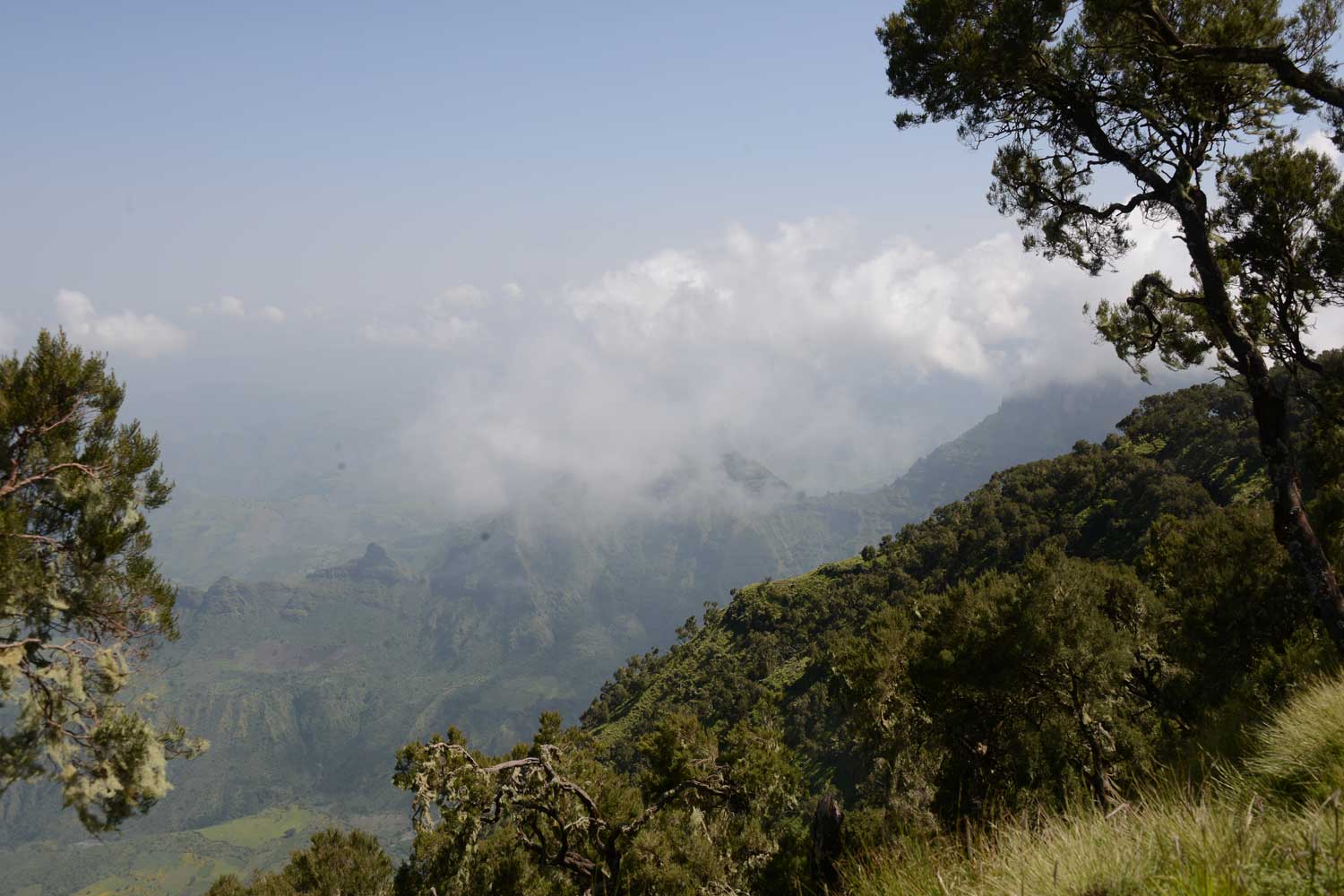
So you were the first person to open a lodge in the area: what did the local people think of the project?
They thought I was completely crazy. Back in those days the average price for a hotel room was about $5.00 and when I said the initial price was going to be $60.00, the local people thought I was completely nuts. Of course we’ve tripled it since and we’ve put the Simiens on the map. When we started, there were just a handful of hardy trekkers. Last year, 25,000 visitors bought entrance tickets to the national park. We’ve had a bit of a dip this year because there are a few political problems in the country. However from next September we should be back up to the same numbers.
“When we started there were just an handful of hardy trekkers. Last year 25000 visitors bought entrance tickets to the national park”
How did you achieve this transformation of the destination and convince people to travel to Ethiopia – especially if they come from a place of very little knowledge about the country?
Ethiopia is a bit different to other African destinations. Take for example a destination like South Africa – there you can book a hotel on the internet and then pick up a car or a camper at the airport . You can’t do that in Ethiopia, because there is no self-drive car hire, since license rules and insurance make it impossible. There are also lots of banking issues that mean that online booking is complicated. The situation is changing rapidly, but still most of Ethiopian travel goes through the DMCs based in Addis Ababa. In other words, the tour operators in Europe are all working with local Ethiopian ground agents.
Back in the day, I knew that if I wanted to charge $60.00 a night, I was going to have to jump completely over the heads of the local agents and sell to the upmarket tour operators in Europe. The Ethiopian DMCs were all focused on cheap, low quality accommodation, whereas that was not what the market required.
So that’s what I did: I started with the French, then the British, then the Germans, Swiss, Spanish, and so on. They told me they believed in my lodge, but then they needed more evidence that there were other places in the country where they could send their clients with confidence. So I made a trip around the country photographing all the good lodges that I could find. In 2010 it only came to twelve lodges! So I put them into a book, had 200 copies printed and went back to the European tour operators. That was enough to convince them that Ethiopia had something to offer where their clients could stay. It really took off from there.
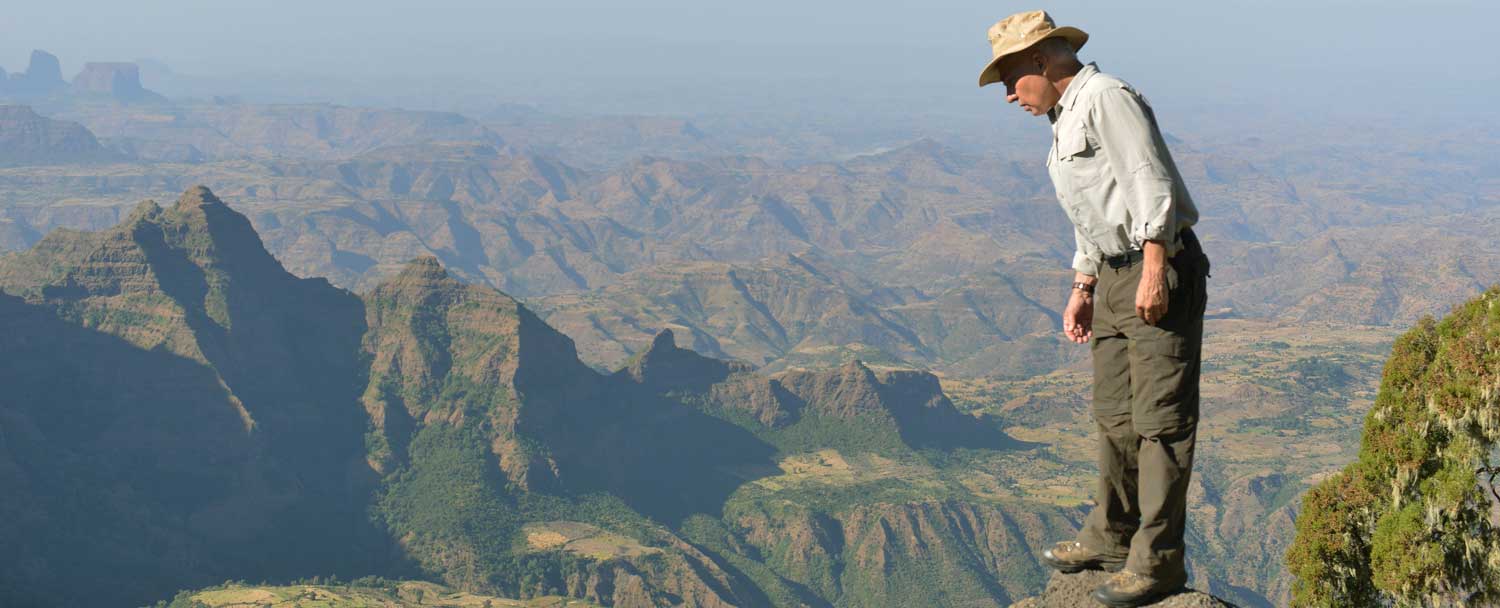
So you weren’t just marketing your lodge but basically marketing an entire country, single-handedly!
Well I had to! People asked me why I was putting my competitor’s lodges in a book that I was paying for. But in reality the other lodges were not near my own, so weren’t really competitors. I called the book Boutique Ethiopia, but seven years ago we weren’t really ‘boutique’. It took several more years to improve the standard. I’ve seen many cases where European tour operators have simply made a ‘cut and paste’ with these twelve lodges and put them into their programmes. Ten years on and at We Are Africa this year, everybody was talking about how Ethiopia is now the new destination. Many of those who rejected Ethiopia ten years ago are now playing ‘catch-up’.
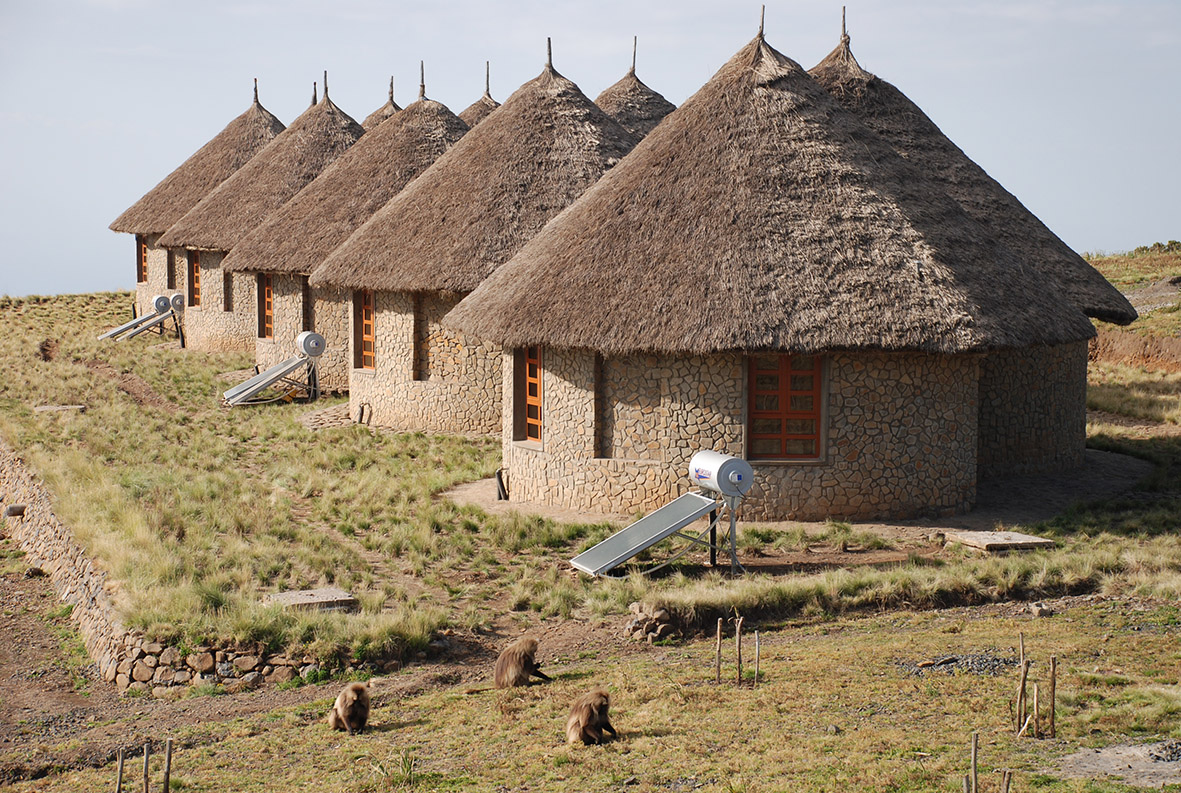
What do you put that change in perspective down to? Is there something unique that you ‘sell’ to potential clients, or do you think the fact that it is lesser known and that people are looking for more unique destinations is what’s behind this boom in popularity?
You know, Ethiopia sells itself. I don’t have to do much selling. I just have to show them images of all the wonderful things that Ethiopia has to offer and it usually is enough. Geographically speaking, Ethiopia has forests, mountains, deserts, volcanoes. The Ethiopian highland people are also so photogenic and very receptive to tourists. They like having their pictures taken and they don’t demand money for it – or not in the north anyway.
One unique experience is the Danakil Desert, which is 300 feet below sea level. There is an amazing active volcano, called Erta Ale and the French in particular love to go there since one of their famous explorers, now ecology minister, once filmed there. When it comes to wildlife there is an enormous variety. There are lion, leopard, and elephant, but they are not quite so easy to see as in other African countries. However there are several endemic animals that are now on the every wildlife enthusiast’s wish list. Take for example the gelada monkey experience, which in primate terms I describe as second only to the gorilla experience. The gelada is the hairy mountain ape that lives above 2700 meters altitude. You can sit surrounded by 200 monkeys and have them all afternoon to yourself. If you go to see the gorillas in Rwanda you’re going to pay $1500 for just one hour. Come to the Simiens and you can have a whole day of monkey photographs for just $4!
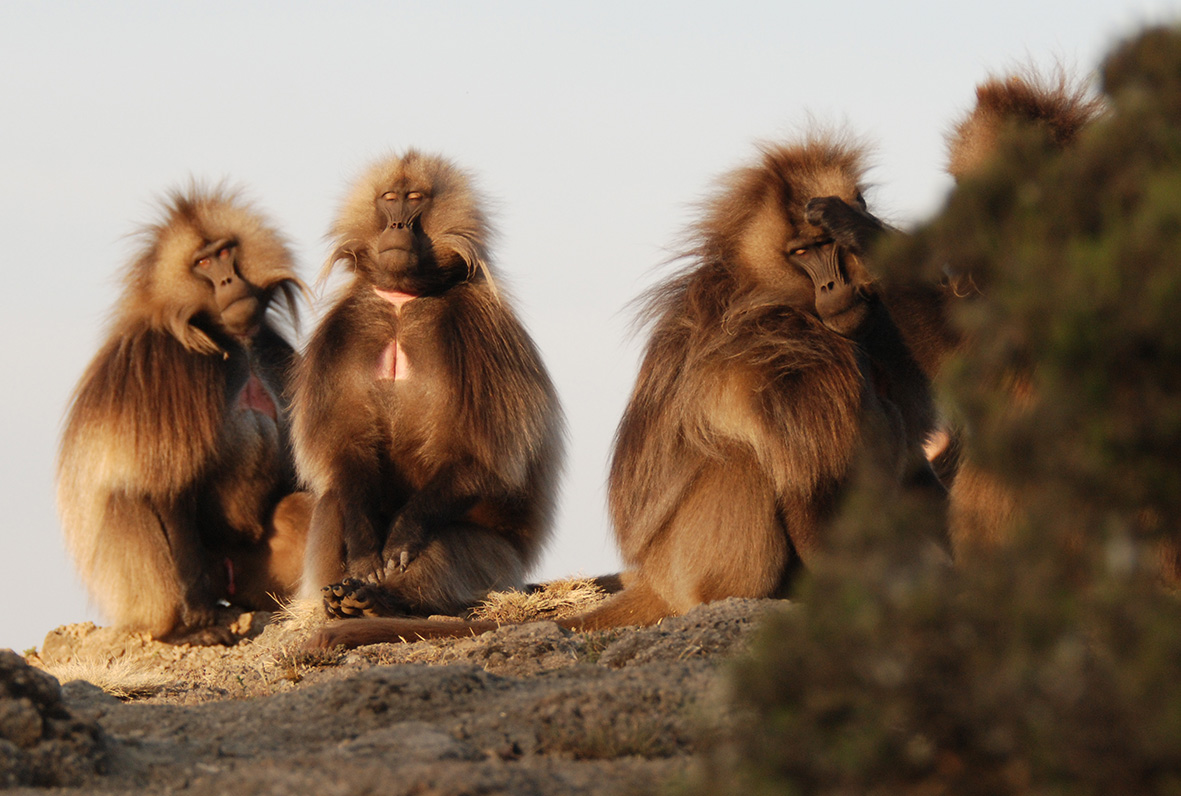
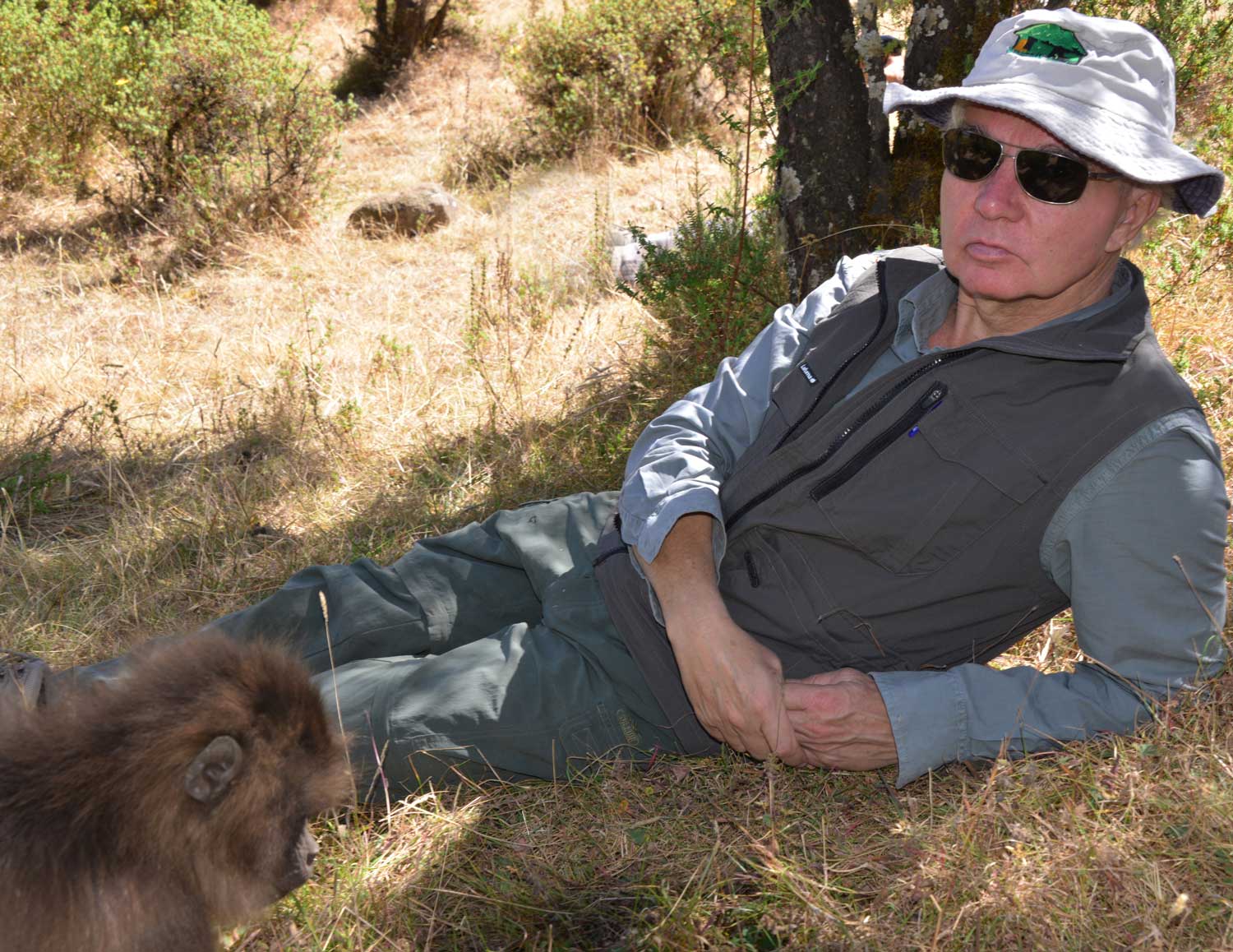
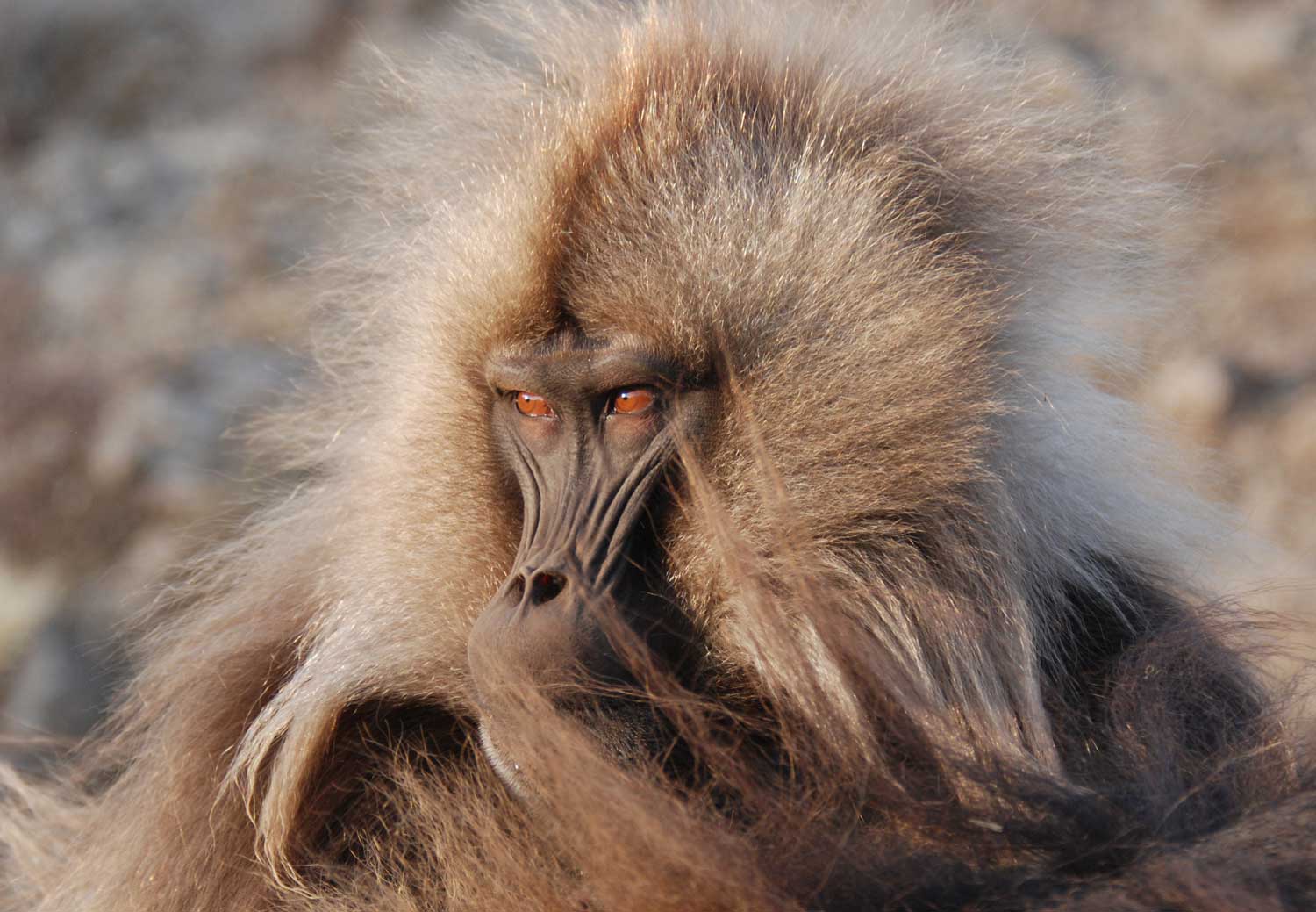
That sounds totally amazing. Are you concerned about the impact tourism growth might have on these incredible wildlife experiences? Could it be a negative as well as a positive thing?
First of all, Ethiopia needed tourism. The country can’t do without it. Vacation tourism is probably producing about $250,000,000 for the economy, which is enormous for a country like Ethiopia. But that’s still only 10% of the income of a country like Botswana or Namibia, so we still have a way to go. What they’ve really got to do is drive it upmarket to get more revenue. Until recently the whole focus has been on numbers, believing that more tourist numbers will produce more income. However, I believe the focus should be on getting quality tourists to visit. To go the mass market route would be a big mistake. A bit like the gorilla example in Rwanda, in fact. As with so many African destinations, we have very fragile places to protect. Take Lalibela, the rock-hewn churches, as an example – if you suddenly drive thousands of tourists through the churches you’re going to destroy the very reasons that people come to the destination.
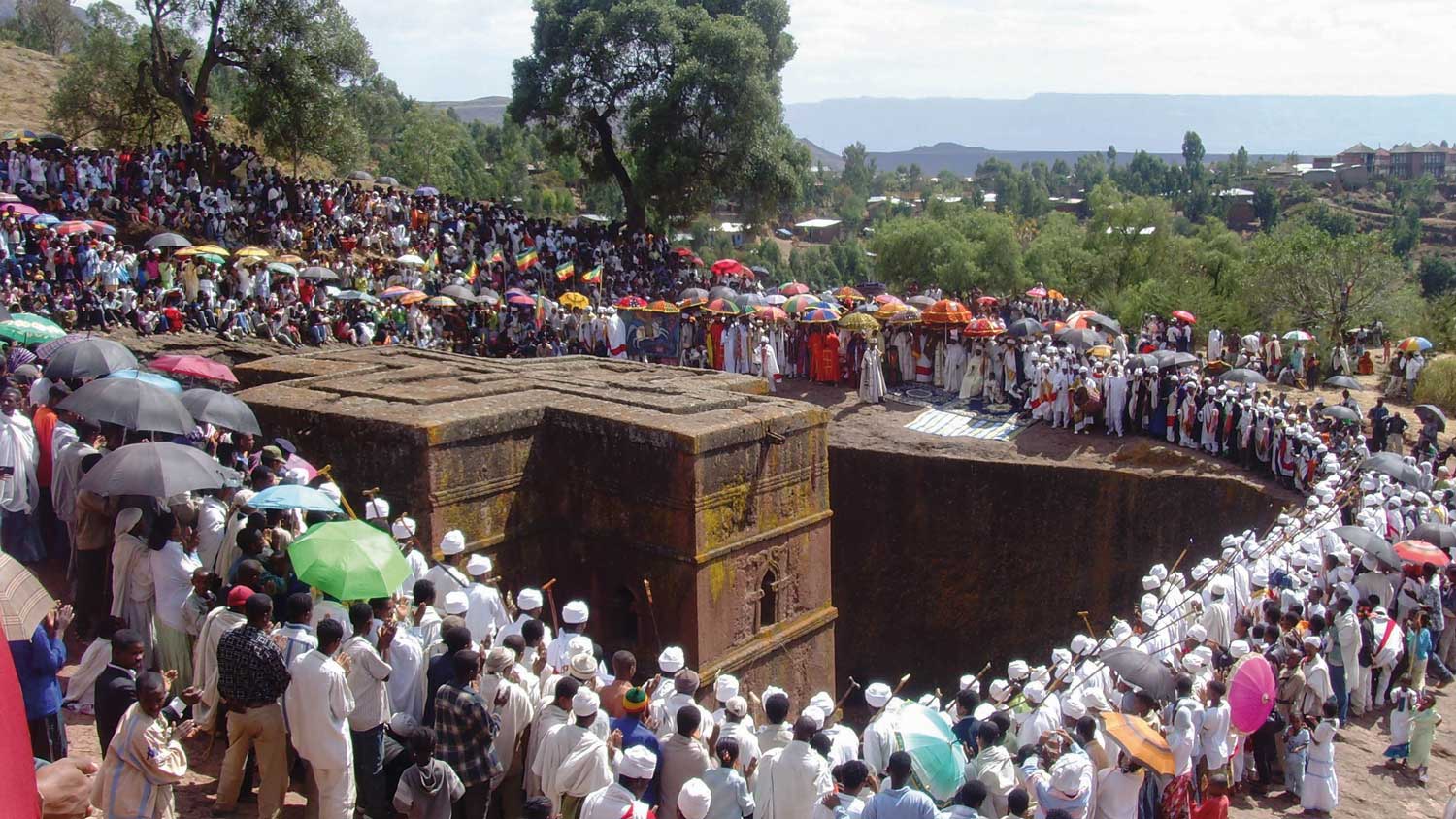
We all know that destinations have been destroyed in the world: the Machu Picchus, the Parthenons, or the Vatican. I visited the Vatican a few years ago and I was horrified by the number of tourists going through there. I don’t want to see tourism on that sort of level in Ethiopia. So I really think Ethiopia has to look at going the Botswana or the Bhutan route, whereby they’re controlling tourism numbers and getting much higher value out of it. While it’s still a virgin destination, there is an opportunity to protect very fragile places, and Ethiopia tops the African list with nine World Heritage sites. Unfortunately the conflict comes from Ethiopian Airlines, which has rapidly become one of the world’s most profitable airlines. That’s great and I’m really pleased to see a world class airline here. However, success for any airline usually means the sale of more seats. So when I now say that Ethiopia needs fewer tourists, it is going against the grain of Ethiopian Airlines, who are trying to get larger volumes of people coming to the country. However, I argue that the thousands of dollars that tourists spend inside the country vastly outweighs the price of an airline ticket. As with all of these tourist destinations, multiple questions need asking – especially the environmental questions. These were the sort of questions that Richard Leakey brought up in his speeches at We Are Africa and the Conservation Lab.
“I really think Ethiopia has to look at going the Botswana or the Bhutan route where they’re controlling tourism numbers and getting much higher value out of it”
Talking of Richard Leakey, what did you take away from his talks this week? Is there anything you might implement differently when you return, based on how tourism and conservation should (or shouldn’t) work together?
I agree fully with Richard Leakey. He’s always been someone who I have admired and I followed closely what he said, especially when it comes to the environment. In many ways we have had lateral thinking all of these years. For example, when we built up in the Simiens we didn’t build on the escarpment edge because we didn’t want to become a lighthouse at night. That would not be very environmentally friendly. So we nestled into the hillside just below the rim at the top of the escarpment ridge. A lot of tourists ask us why we didn’t build up on the top to maximise the view. Well, that would be very selfish, so we didn’t do it. At the time of building I had read a lot of the environmental reports coming out of Kenyan national parks. These reports wrote that lodges have to be discreet; to blend environmentally and architecturally into wherever they are situated. So we tried to do that in the Simiens too.
Additionally on Leakey’s point about working with Africans, we’ve done that too – right from the beginning that has been part of our DNA. Last year we built eight classrooms in three of the local primary schools. We build a lot of school furniture too – last year probably 200 school desks were manufactured locally and put into those classrooms. This is mostly funded by benevolent tourists. A little bit has come from us, but an awful lot has come via clients, who want to get involved when they see a very poor country.
“I am very much aware that tourism can be this double-edged sword. It can really backfire if we don’t control it”
We’ve done some medical work but we try to avoid potential situations with ministries. For example, we purchased a cataract microscope for the local hospital, but then I decided that I don’t actually know very much about ophthalmology, so we stick to what we know. Last year we restored a monastery that hangs on the mountain cliff and as a result created a new trekking destination for tourists. I observe that generally tourism is helping for the better. But I am very much aware that it can be this double-edged sword. It can really backfire if we don’t control it. I think Leakey is absolutely right and unwittingly we’ve reflected a lot of what he has been saying.
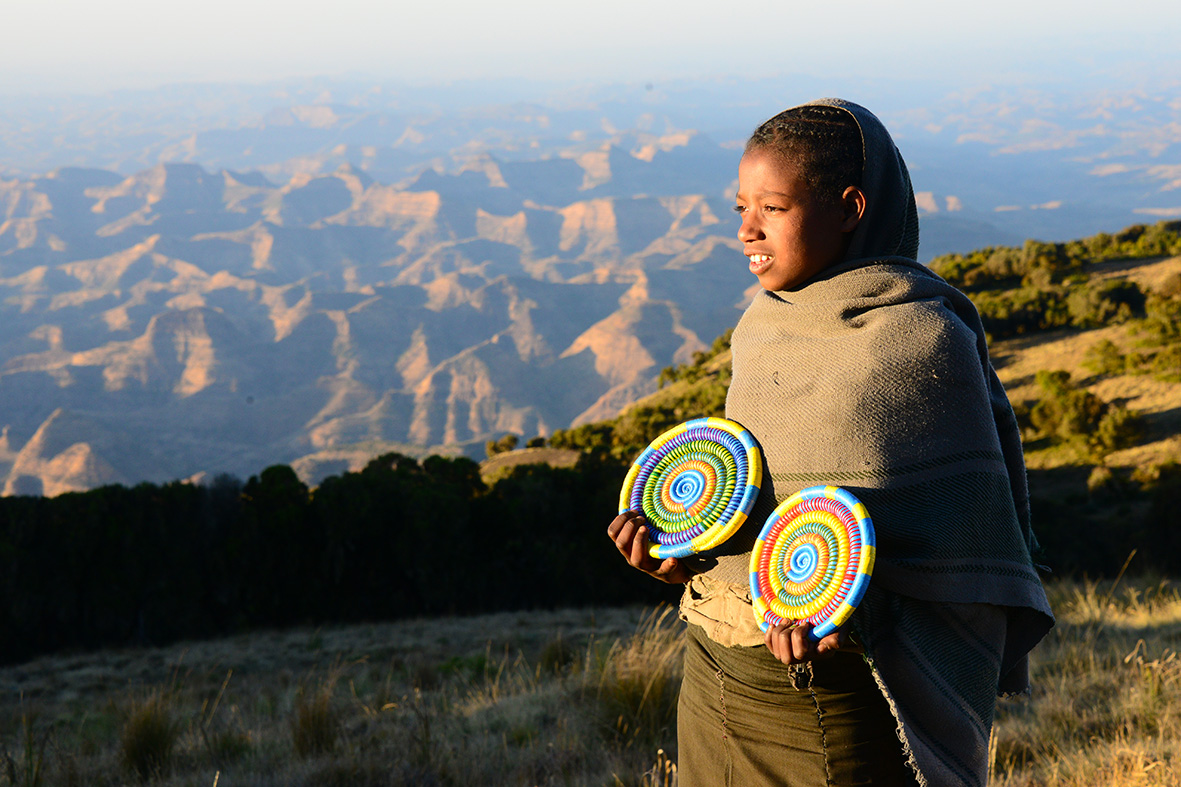
Of course Richard Leakey is known for his controversial statements and in Cape Town he certainly ruffled a few feathers. In particular he said that if you really want to get back to a raw African state with a continent full of wildlife, then we have to ban tourism. That certainly made the audience bristle. In a way he is absolutely right and I know what he was trying to say. Nonetheless, we can’t spin the clock back. Fortunately, and as he concluded in his speeches, ‘we have to fight our way forward’, not backwards. I conclude that it is the responsibility of all tour operators, and indeed everyone in this industry, to follow the principles of working in an environmentally friendly way – and that is not happening right now.
So to come back to the tourist who does not have a view from his window – if that means that the leopard can hunt at night without bright lights shining in his eyes, then we have to learn that the leopard must take priority over the visitor. Tourists will have to learn to be environmentally friendly too. Meanwhile, I also believe the problem is that most tourists coming to Africa don’t understand the environmental problems that Africa is facing and often they don’t actually appreciate what they are seeing. For example, when they see a lion in a southern African safari park that has been fed meat all of its life, they don’t realise that its offspring are then destined for the trophy hunter’s mantlepiece. There is no option because these cats no longer know how to hunt.
However don’t let me go overboard. There are some great stories out there where tourism is benefitting the environment. However humans have a great ability to screw up the continent and if we take the wrong route over the next decade, it could be very detrimental for our industry. Leakey said that very clearly.
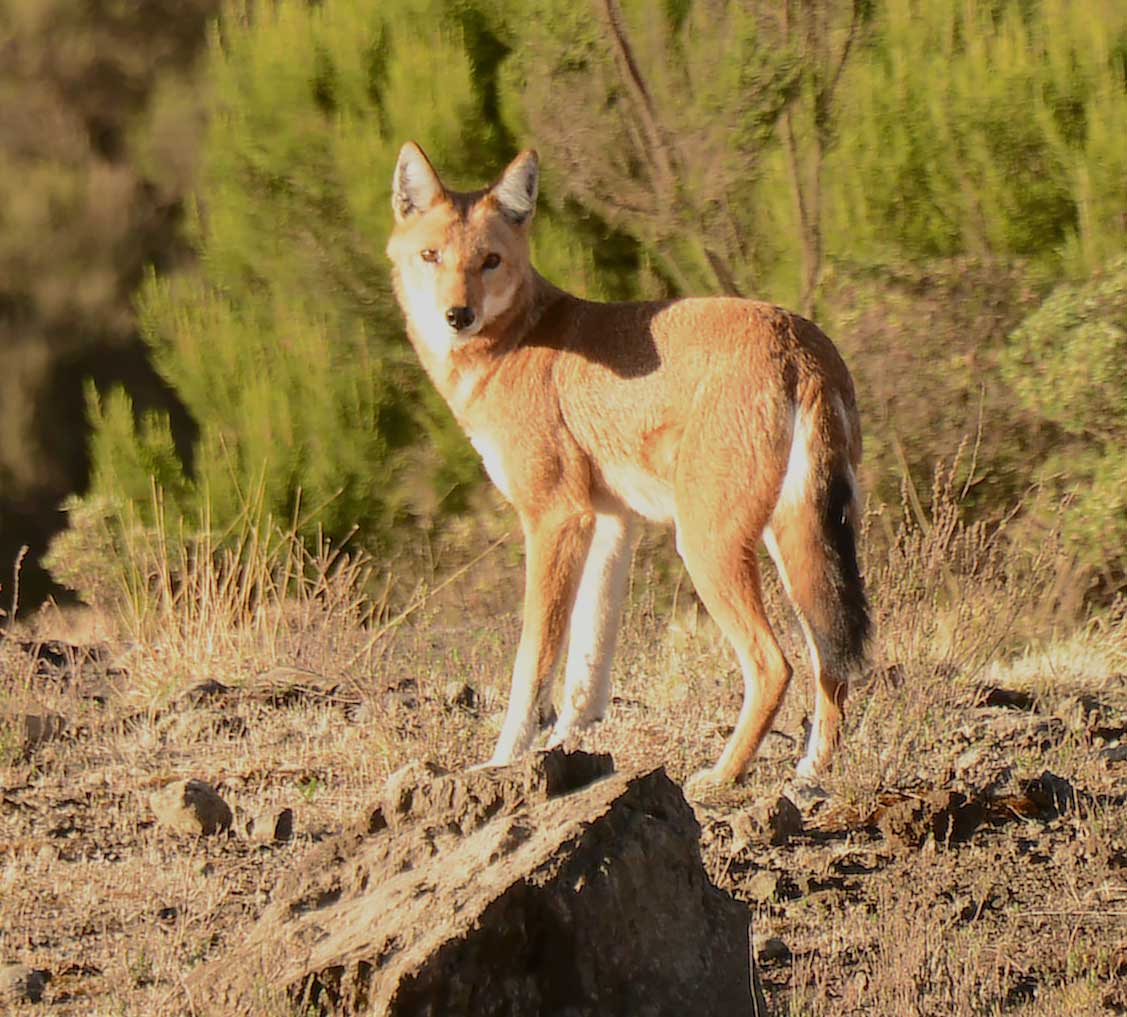
It’s a lot of responsibility isn’t it? Do you think it is sometimes intimidating working in tourism because there are so many things we could get wrong as well as right?
Absolutely. It is a shame to get things wrong when it is so easy to get things right first time. But you know, it is only a matter of sticking with a few basic principles and generally things work out. Primary to this is working with local communities. Let me give you an example: In August and September last year we had a few political disturbances in Ethiopia and several lodges were burnt down, especially in the south of the country. It was an ethnic issue that had nothing to do with foreigners and not a single tourist was caught up in the distrubances. Even in the north we had problems and a lodge about 100km from us was destroyed. A mob of about 200 people completely wrecked the place. I remember seeing it a few days later – it was heartbreaking to see the mess that a mob can make. The real problem here was that the owner had done nothing for the local people.
“It’s a good example that if we don’t work at tourism that benefits communities, it’s going to backfire on us”
It almost happened to us. We actually had some young people come to us and make noises. But what happened in our case was that the elders from the village came out and told the young troublemakers to go away. They told the boys, “look, this is our bread and butter, this is our income”. The elders understand that they’re benefiting enormously from the tourism income. The upshot was that the young troublemakers just evaporated. It surprised us enormously that the elders stood with us rather than with their own youth, but it was really a recompense for the work that we’ve been doing over the years. It’s a good example that if we don’t work at creating tourism that benefits communities, it’s going to backfire on us.
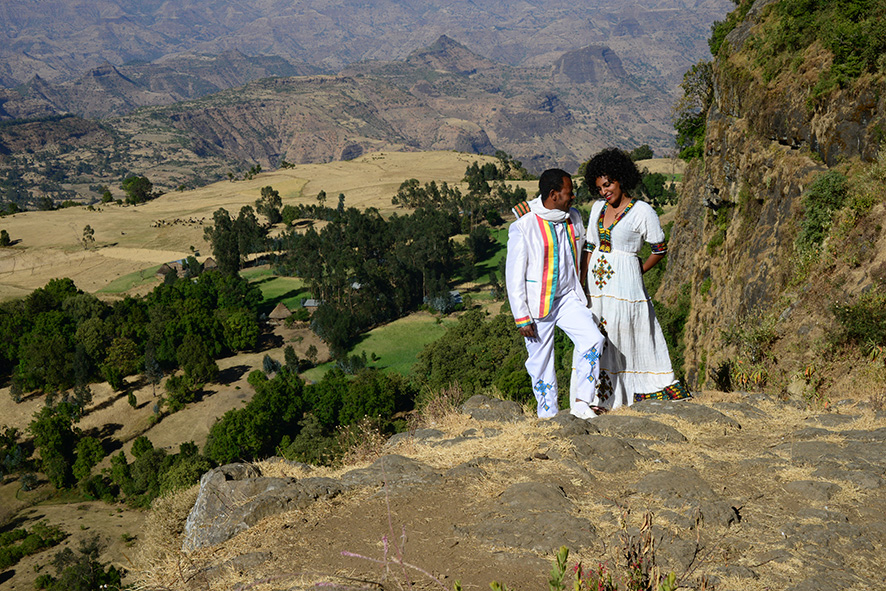
How do you deal with promoting to tourists in that kind of climate? How do you market a destination that isn’t necessarily perceived as ‘safe’?
Well which country in Africa is safe? Everywhere you look in Africa there’s something going on. Kenya’s had its problems, and Zanzibar’s had issues too. South Africa has had its problems in the past. Look at Zimbabwe! They’ve all had disturbances, but tourists still return. The typical tourist who comes to Africa is not worried by a few political disturbances and very often it is the western media who exaggerate minor issues. So I am not particularly worried about our future and when I look at our reservations for September 2017 onwards, it’s looking very good.
Awesome. Tell me what the future holds for Simien Lodge and tourism in Ethiopia – what do you think will happen in the next year or two?
As I say, I’ve got no fears for our Lodge because even in a bad year we’ve managed to tread water. If we can make a small profit in an absolutely lousy year – which it has been – what are we going to do when it comes to the good times? We’ve had three or four really great years. Meanwhile we have done a lot of good things and it’s been a lot of fun. I actually think Ethiopia can only go forward.
They’ve just changed the Director of the Ethiopian Tourism Organisation and I look forward to working with the new guy. I hope the new team will look towards quality a bit more, because that’s certainly the way to go. At the same time we’ve also got to get the message through to the tourists who are coming that they must also play the game. This is where the airlines have a role to play giving the right information to tourists before they set foot in the country. Lastly we must work with local people. We must work with Africans – the colonial days are long gone.
